Quick: Name a national park in Florida.
You said Everglades National Park, right?
You probably didn’t say Timucuan Ecological and Historic Preserve or De Soto National Memorial.
And therein lies a great opportunity, because there are 11 national parks in Florida, several of which are little known hidden treasures. The parks stretch from the Panhandle, where Gulf Islands National Seashore is so far west it is in the Central Time Zone, to Dry Tortugas National Park, a remote island 70 miles off Key West.
Some people go on road trips to see how many national parks in the US they can visit. You can go on a roadtrip to explore national parks in Florida — and you’d still have to drive at least 1,200 miles to see them all!
To help you plan trips to discover these national treasures, here’s a guide to national parks in Florida.
Every year, the national parks offer several free days. See this story to see details and other dates.
National parks in Florida, Northern section

Castillo de San Marcos National Monument
The star of St. Augustine, this fort will thrill history lovers, but I think it will wow just about anybody.
First, it is spectacularly scenic. The beautiful coquina-stone fort is three centuries old and offers unobstructed waterfront views.
Secondly, the living history programming is quite entertaining. Volunteers and rangers in accurate period guard demonstrate how to fire a cannon or musket at 10:30 a.m., 11:30 a.m., 1:30 p.m., 2:30 p.m. and 3:30 p.m. on Fridays, Saturdays and Sundays. It’s worth planning your visit to experience this when it reopens.
- Fort is open seven days a week 9 a.m. – 5 p.m. A maximum capacity of 350 visitors in the historic fort at any time will be in effect.
- Entry fee: $15 for seven consecutive days
- 1 S Castillo Drive, St. Augustine, FL 32084
- National Park website for Castillo de San Marcos
- Florida Rambler story on St. Augustine fort, Castillo de San Marcos.
Fort Matanzas National Monument
Fort Matanzas is one of my favorite Florida hidden gems because it involves a ferry ride across a beautiful inlet AND it is free.
Located 14 miles south of the St. Augustine fort, is a smaller Spanish fort built 50 years after the Castillo de San Marcos. Fort Matanzas has expansive views of water and marshland and wildlife is abundant: Dolphin are frequently spotted in the water; wading birds fish along the shore, osprey fly overhead. After a short boat ride across the Matanzas River, you can climb a very narrow ladder to get to the top of the tower — people were smaller then! — for a tour of the compact fort.
- Ferry Service to Fort Matanzas is operating Wednesday to Monday with no ferry on Tuesdays, and to get a ticket you will probably have to arrive early. Tickets are often gone by 11 a.m.
- Visitor center and restrooms and nature trail are open
- Entry fee: None
- Address: 8635 A1A S, St. Augustine, FL 32080
- Website for Fort Matanzas
- Florida Rambler story on Fort Matanzas
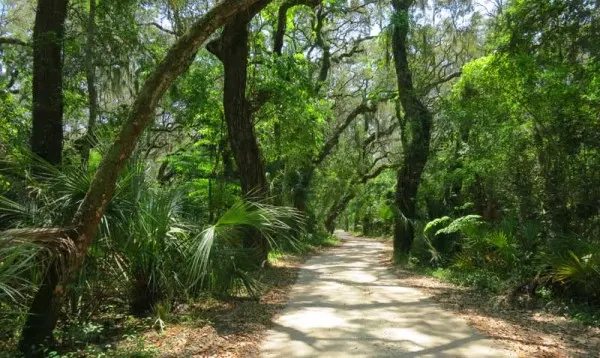
Timucuan Ecological and Historic Preserve
I had lived in Florida for decades before I discovered the Timucuan Preserve, a national park near Jacksonville with 46,000 acres of salt marshes, coastal dunes, and hardwood hammocks.
The Timucuan Preserve is home to several remarkable historical sites, including my favorite, the Kingsley Plantation, a 1798 plantation house that tells a story of slavery and a family whose saga could only happen in Florida. (Read a little about this remarkable saga here.) In addition to the history, the Timucuan Preserve has excellent hiking trails, kayaking, fishing and an Old Florida look and feel.
- Entry fee: No fee
- Address: 12713 Fort Caroline Road, Jacksonville, FL 32225
- Website for Timucuan Preserve
- Florida Rambler story on Timucuan Preserve
Fort Caroline National Memorial
Fort Carolina is located on the bluffs of the St. Johns. The pile of shells and sand is only 60 feet high, but it is the highest point in Duval County.
The French had a short reign in Florida in the 1500 and 1600s, and this site tells the little-known story of French settlers in Florida. History buffs will like the replica of the original fort, built at one-third scale, and the displays. Others appreciate several hiking trails and the beautiful view of the St. Johns River.
This is a good picnic spot; it would be easy to spend a few hours here exploring trails and history. Across the road from the monument is Spanish Pond, a key location in the battle between the French and Spanish. Today, there are boardwalks and trails. Near the Fort Caroline Monument is the Theodore Roosevelt Area, another good place to hike.
- Fort Caroline grounds are open Wednesday-Sunday from 9 a.m. to 5 p.m.
- Entry fee: None
- Address: 12713 Fort Caroline Road, Jacksonville, FL 32225
- Website for Fort Caroline National Memorial
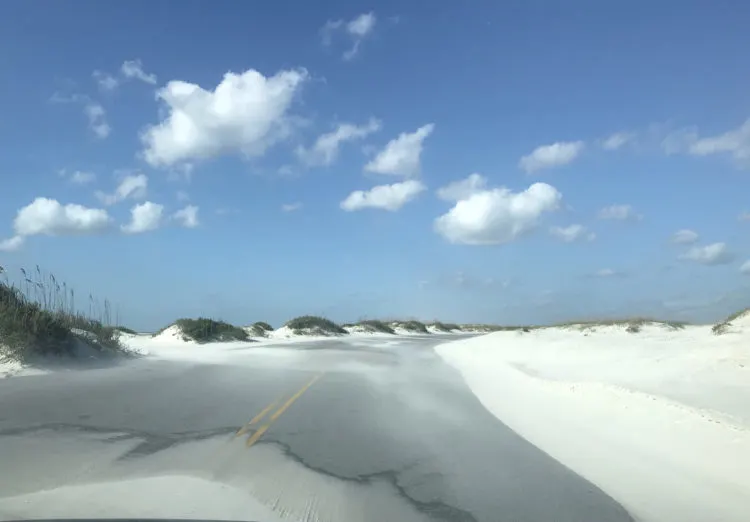
Gulf Islands National Seashore
This national park stretches along the Gulf Coast from far western Florida into Mississippi encompassing some of the best beaches in America plus several historic forts and sites.
Highlights in Florida are Fort Pickens and many miles of pristine barrier island with sand like sugar. One thing that makes Gulf Islands National Seashore so special is the expansiveness of it — you can find unspoiled, uncrowded, spectacular beaches and shore birds and dolphins.
- The park is expansive and a little hard to figure out, so this Florida Rambler story is meant to help you plan: Gulf Islands National Seashore: Beaches that wow; rare old fort
- Website for Florida portion of Gulf Islands National Seashore in Florida
- Entry fee: $25 per vehicle for seven consecutive days
- Address: Entrances are located at Fort Pickens Area, Opal Beach at the Santa Rosa Area, Okaloosa Area, Fort Barrancas Area, and Perdido Key Area
National parks in Central Florida
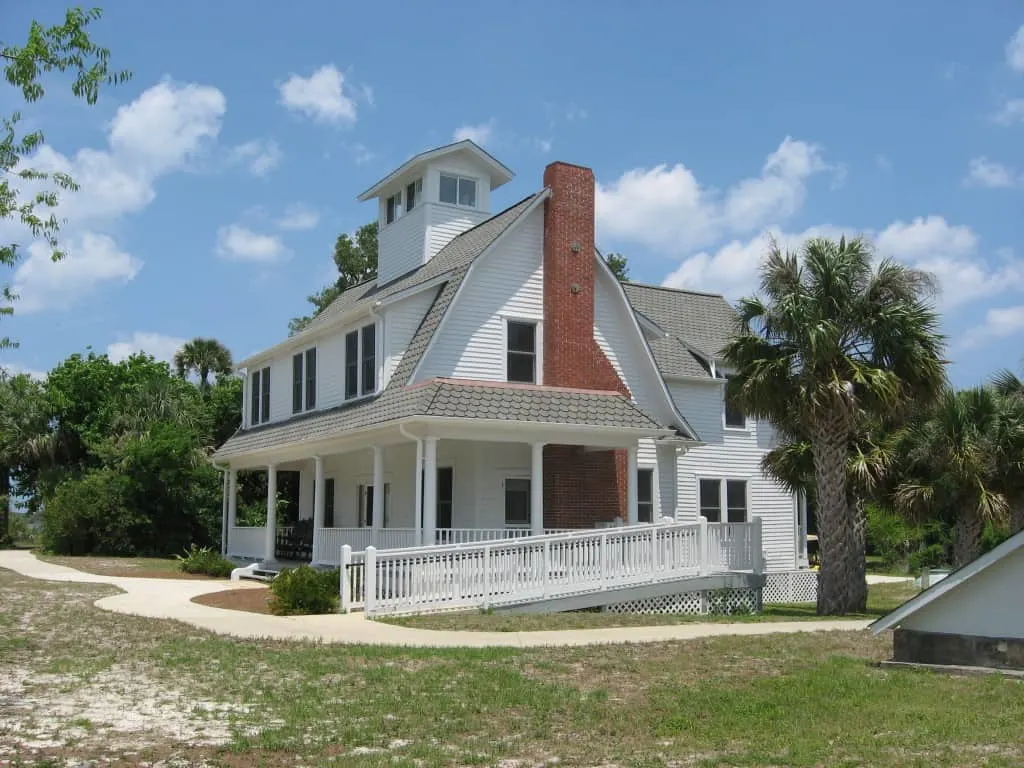
Canaveral National Seashore
Located east of Orlando on the Atlantic, Canaveral National Seashore is the longest undeveloped beach in Florida, 24 miles of pristine coastal sanctuary for people and wildlife.
The sprawling park adjoins the Kennedy Space Center and Merritt Island National Wildlife Refuge, giving it a remote location and secluded feel. With a wild area at its center, you must enter either from the south or the north, with no road connecting the two. Besides all the swimming, fishing and beachcombing opportunities, Canaveral National Seashore has fascinating historic sites and hiking trails.
- Entry fee: $20 for cars for seven consecutive days
- Address: There are entrances at Playalinda (via Titusville) and Apollo Beach (via New Smyrna Beach). Playalinda Beach is currently closed (as of mid-December) due to extensive damage from Hurricane Nicole.
- Website for Canaveral National Seashore
- Florida Rambler story on Canaveral National Seashore
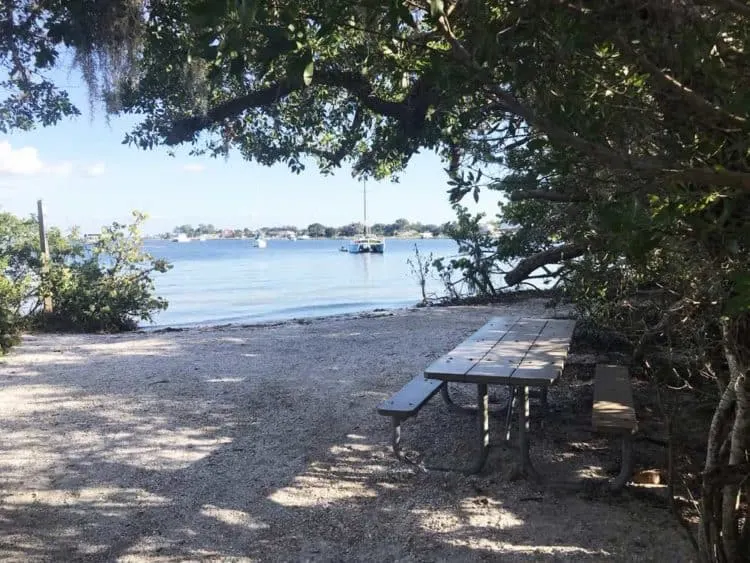
De Soto National Memorial
Because people from Great Britain founded the United States, most of us learn little about the Spanish, who came to Florida earlier but whose influence faded. As a result, a national memorial about conquistador Hernando de Soto covers what may be fresh ground for many of us.
This park occupies 26 beautiful acres on a peninsula where the Manatee River joins Tampa Bay. It has spectacular views with benches positioned for those who want to watch the passing boat traffic. A well-done three-quarter-mile trail goes along the water and through the mangroves, telling the story of the indigenous people and the Spanish explorers. There are several small beaches.
In winter, a Living History Camp called Camp Uzita features rangers and volunteers dressed in period clothing with demonstrations. Programs are provided four days a week: Thursday through Sunday from December to Mid-April (10 a.m. – 3 p.m.) Park staff and volunteers recreate a working 16th Century camp experience. Here you can try on armor, watch a demonstation of archery, atlatl and hear the roar of an arquebus (a type of gun). Programs and demonstrations are at 10 a.m.,11 a.m.,1 p.m. & 2 p.m.
- The visitor center at De Soto National Memorial is open, along with nature trails and restroom from 9 a.m. to 5 p.m.
- Entry fee: None
- Address: 8300 Desoto Memorial Highway, Bradenton, FL 34209
- Website for Desoto National Memorial
National parks in South Florida
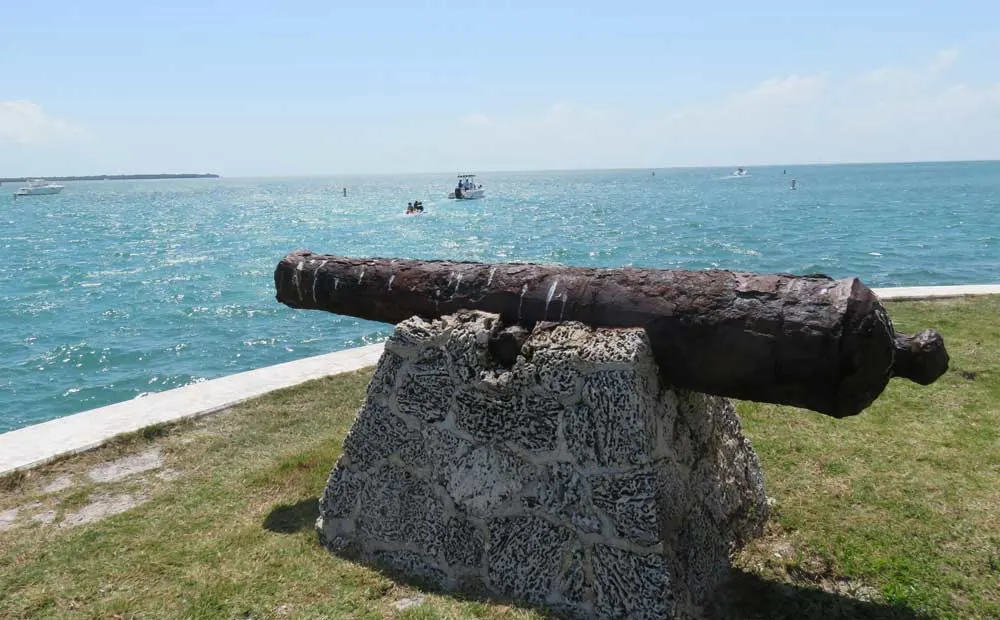
Biscayne National Park
Biscayne is certainly a different sort of national park — it’s 95% underwater. Located south of Miami, it offers adventures underwater, on the water and near the water. On land, there’s an excellent visitor center, attractive picnic sites and beautiful views.
There are several boat trips to help you see more, including the most popular boat tour, which is to Boca Chita, an island with a fascinating back story. You also can take snorkeling trips, including snorkeling on a shipwreck. Kayaking from the mainland is a good option, as is the tour to Stiltsville, an area in Biscayne Bay where seven historic stilt houses are remnants of bygone days.
- Entry fee: None
- Address: 9700 SW 328th St., Homestead, FL 33033
- Website for Biscayne National Park
- Florida Rambler story on Biscayne National Park
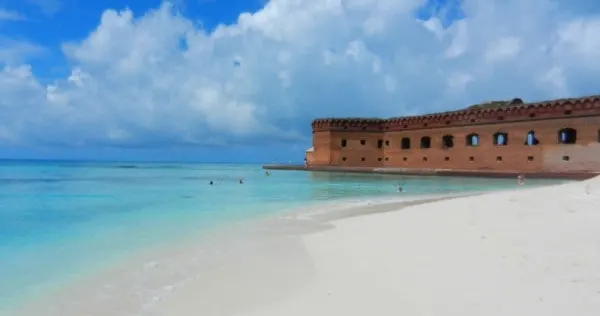
Dry Tortugas National Park
This is one of the least-visited national parks because it is a lot of trouble to get there. But it’s worth it.
A few good reasons to visit this island 70 miles west of Key West: the Civil War era Fort Jefferson, the extensive bird life, the dazzling snorkeling in clear turquoise water, the sheer beauty of this speck of land and surrounding seas.
The park can only be reached by ferry (about $200 per person) or seaplane (around $375 per person.) Because of the difficult reaching it, consider planning a camping trip so you can spend some time.
- Entry fee: $15 per person
- Website for Dry Tortugas National Park
- Florida Rambler story on Dry Tortugas National Park
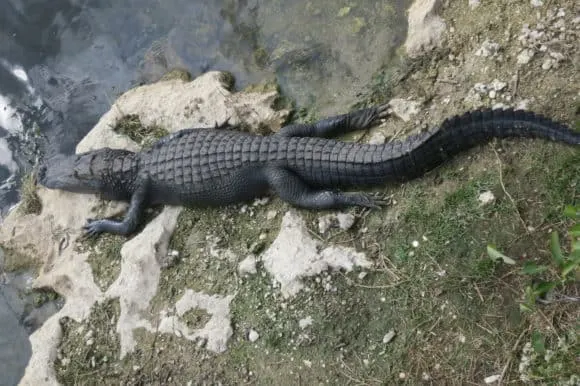
Big Cypress National Preserve
Adjacent to Everglades National Park, Big Cypress was established as a “preserve” rather than a park so that its 729,000 acres could still be available for activities not allowed in the national park, such as swamp buggies and air boats.
For visitors, a key advantage of Big Cypress is that since it has no fee, it is a good alternative for those who want an Everglades swamp experience without paying the hefty price to enter Everglades National Park.
Some of the best paddling trails in the Everglades are actually in Big Cypress — Turner River kayak trail, for example. There’s also good hiking and a wonderful rustic backroad, Loop Road, where you are likely to see wildlife.
In addition, Big Cypress, located in a wild area between the urban east and west coasts, has dark skies that star-gazers love. Rangers offers an astronomy program monthly in the winter season. Details.
- Entry fee: None
- Address: Big Cypress National Preserve Visitor Center, 33100 Tamiami Trail E, Ochopee, FL 34141. The Oasis Visitor Center is open Tuesday-Saturday from 9:00 a.m.- 4:30 p.m. It is closed Sunday-Monday. The bathrooms remain open seven days a week.
- Website for Big Cypress
- Florida Rambler story on Big Cypress National Preserve
- Here’s a Florida Rambler guide to the section of Tamiami Trail that travels through Big Cypress, with key stops in the preserve.
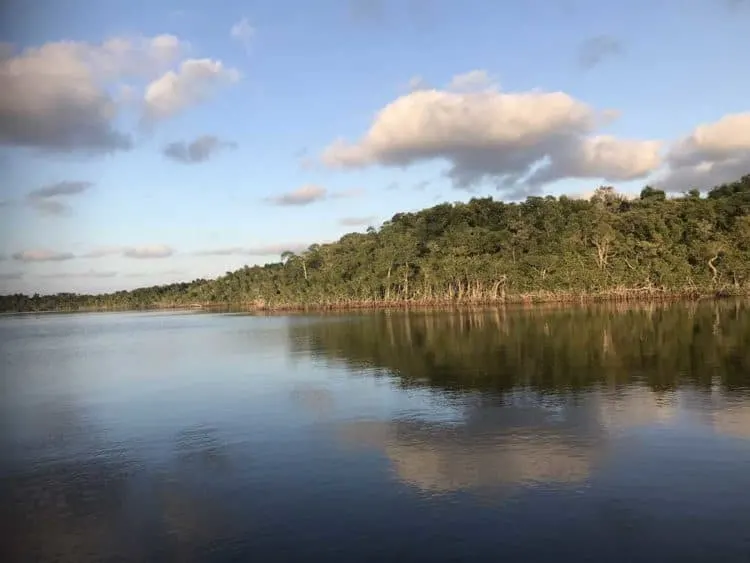
Everglades National Park
This best-known Florida national park is huge and varied, stretching from the Atlantic to the Gulf across the bottom of the Florida peninsula, with three entrances and dozens of trails for hiking and kayaking.
It’s known for its vast and visible wildlife. It’s not hard to see alligators and even crocodiles. Manatees routinely hang out in the Flamingo Marina; dolphins commonly swim along boat tours from the Gulf Visitor Center. Thousands of wading birds migrate here in the winter.
It’s not a park that wows you through a windshield. You need to experience it by being immersed in it on foot or by boat.
In winter, rangers offer a variety of free programs in locations throughout the park. See the calendar here.
- Entry fee: $35 per car for seven consecutive days. (There is no entrance fee at Gulf Coast Visitor Center in Everglades City.)
- Address: There are entrances in Homestead, at Shark Valley off the Tamiami Trail and on the Gulf Coast in Everglades City.
- Website for Everglades National Park
- Here’s a Florida Rambler visitor guide designed to help you decide what to do in Everglades National Park.
Note: Check website for each park for up-to-date information about hours and operations.
National park fees and free days
Every year, the national parks offer several free days — Martin Luther King Jr. Day, the first day of National Park Week, the anniversary of the National Park Service, National Public Lands Day and Veterans Day. In 2024, Juneteenth was added to the list of free days. See this story to see dates for this year.
Current members of the military and veterans get free admission. The families of fourth grade students also enter without fees. Details on those programs and other passes are in this Florida Rambler story.
Discounted passes to national parks are available for senior citizens. Additionally, the annual America the Beautiful National Parks and Federal Recreational Lands Pass allows unlimited entrance to more than 2,000 federal recreation areas, including all national parks. In 2024, the cost is $80 for this annual pass. Here’s more information about passes.
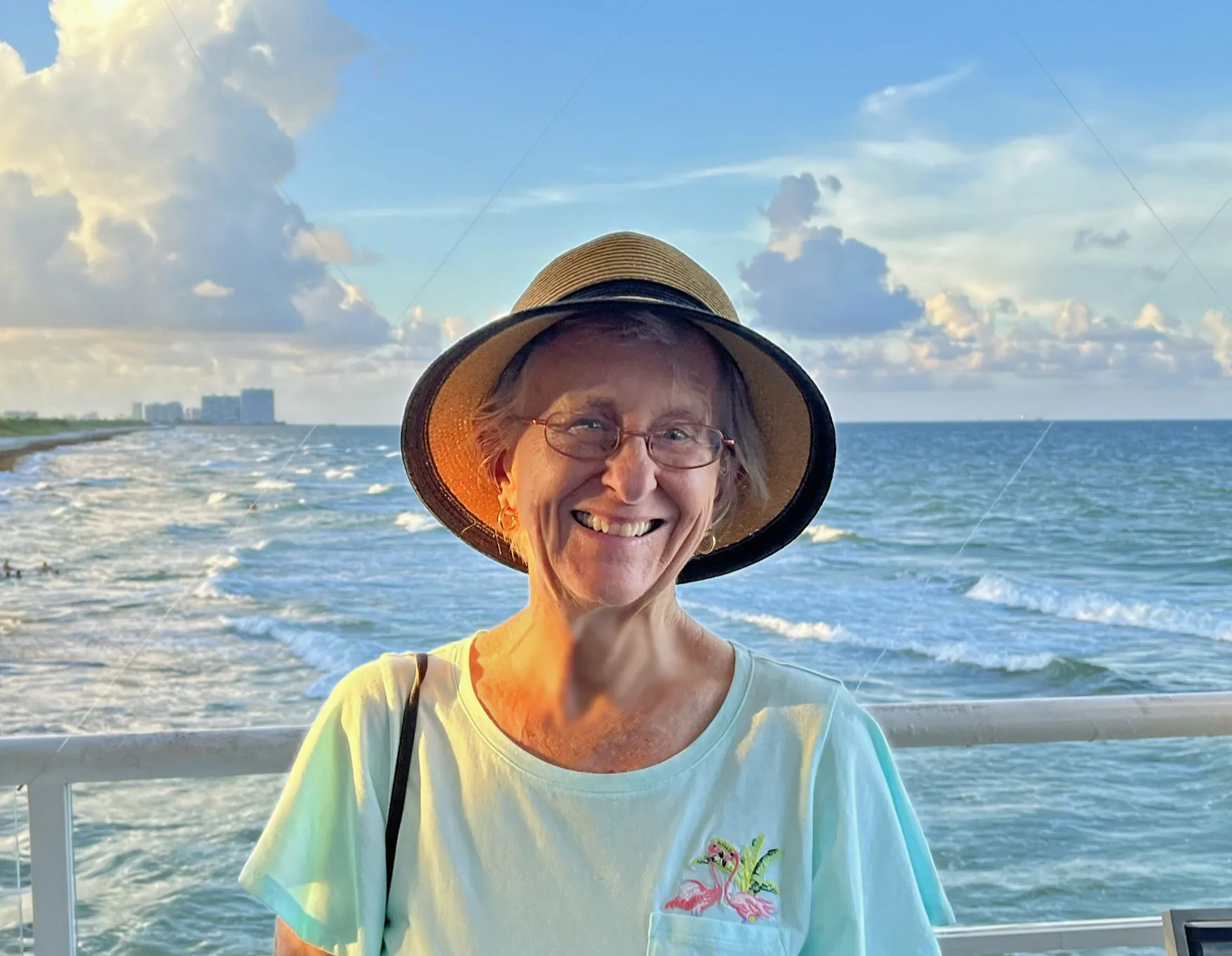
The author, Bonnie Gross, travels with her husband David Blasco, discovering off-the-beaten path places to hike, kayak, bike, swim and explore. Florida Rambler was founded in 2010 by Bonnie and fellow journalist Bob Rountree, two long-time Florida residents who have spent decades exploring the Florida outdoors. Their articles have been published in the Sun Sentinel, the Miami Herald, the Orlando Sentinel, The Guardian and Visit Florida.

Monika Moorman
Thursday 3rd of August 2023
Love your updates, Bonnie! Thank you, Florida Rambler!
Jeff Wade
Sunday 11th of October 2020
You're right! We need to checkout these parks! I look forward to it! :-)
Steven Bryant
Thursday 1st of October 2020
Awesome! Those of us who live in Florida should really make an effort to see the real Florida. There are so many places I can't wait to visit. Thank you for the great site.